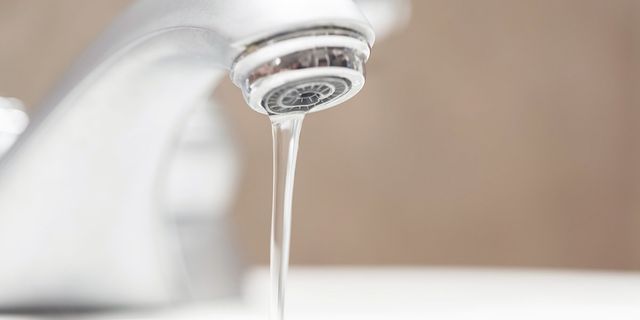Just about every person has their private assumption about 4 Ways to Troubleshoot Low Water Pressure.

Low water stress in your home can be a frustrating issue, influencing whatever from bathing to cleaning meals. If you're experiencing weak water flow, there are a number of feasible causes and solutions to discover. In this guide, we'll talk about usual reasons for low water pressure and functional steps to resolve the issue properly.
Intro to Low Tide Stress
Low tide pressure occurs when the circulation of water from your faucets, showers, and various other components is weaker than usual. This can make daily jobs much more difficult and much less efficient. Comprehending the sources of low tide pressure is essential to discovering the appropriate solution.
Usual Reasons For Low Tide Pressure
Pipeline Obstructions
Over time, pipelines can become blocked with natural resource, debris, or particles, limiting the flow of water. This is a common problem in older homes with galvanized steel pipelines.
Deterioration
Deterioration within pipelines can lead to leaks and decreased water stress. Rust build-up can tighten water circulation, especially in maturing plumbing systems.
Faulty Stress Regulatory Authorities
Stress regulatory authorities are accountable for maintaining regular water stress in your house. If they malfunction, it can lead to low water pressure or irregular circulation throughout your home.
Community Water Supply Issues
Often, the problem exists outside your home. Community water supply concerns, such as main line leakages or maintenance work, can momentarily minimize water stress in your location.
How to Detect Low Water Pressure
Inspecting Faucets and Components
Start by examining the water pressure at various taps and fixtures throughout your home. If the concern is separated to certain locations, it may indicate localized issues.
Evaluating Pipes
Examine noticeable pipelines for signs of leaks, rust, or clogs. Pay attention to any unusual sounds, such as banging or rattling pipelines, which could show problems within the plumbing system.
Consulting with a Plumber
If you're unable to determine the source of low water pressure, think about employing a professional plumber to perform a thorough inspection. They can determine underlying problems and recommend ideal solutions.
DIY Solutions to Deal With Low Tide Stress
Cleansing Aerators and Showerheads
Mineral deposits can build up in aerators and showerheads, reducing water flow. Get rid of and clean up these components routinely to boost water stress.
Flushing Water Heater
Debris accumulation in the water heater can limit flow and lower performance. Flushing the storage tank periodically aids get rid of debris and maintain optimal efficiency.
Checking Stress Regulator
Guarantee that the pressure regulator is operating correctly. Changing or replacing the regulator can aid recover correct water stress throughout your home.
Cleaning Clogs in Pipes
For small clogs, try making use of a plumbing snake or chemical drain cleaner to clear blockages in pipes. Beware when making use of chemicals and comply with security standards.
When to Call a Professional Plumber
If do it yourself initiatives fall short to resolve the concern or if you believe substantial plumbing problems, it's ideal to seek assistance from an accredited plumber. They have the proficiency and tools to address complicated issues safely and properly.
Preventive Measures to Keep Water Pressure
Normal Maintenance
Schedule regular upkeep for your plumbing system to stop problems such as deterioration, leakages, and clogs. Attending to minor issues early can aid prevent more considerable fixings later on.
Setting Up a Stress Booster
Think about installing a pressure booster pump to boost water stress in locations with consistently reduced flow. This can be particularly valuable for multi-story homes or homes with high-demand components.
Tracking Water Usage
Bear in mind water usage practices and prevent ill-using the plumbing system. Easy changes, such as shocking showers and laundry lots, can assist maintain ample water stress.
Conclusion
Dealing with low tide pressure can be frustrating, yet identifying the underlying causes and executing suitable services can bring back optimum flow throughout your home. Whether it's cleaning aerators, evaluating pipelines, or talking to a plumber, taking positive steps can make certain a constant supply of water for your everyday requirements.
HOW TO FIX LOW WATER PRESSURE IN YOUR HOUSE (EXPERT GUIDE)
The morning shower lacking any real pressure? Bathtub taking hours to fill? Or maybe you’re dissatisfied with the inadequate performance from your combi boiler?
Then you, like millions of others across the UK, might be experiencing low water pressure.
Fortunately, the good news is that you don’t have to continue living this way. The cause of low water pressure in the home is often quite simple, and you may not even require a plumber to fix the problem.
What causes low water pressure in the house?
If you are experiencing issues with water pressure throughout your home, then you may have one of the problems outlined below.
Most of these problems can be fixed quite easily, but for others, you may need to contact a plumber.
Obstructed Shutoff Valve
If you’ve just bought a new home or recently had building work conducted on your property, there is a chance that your water valves were not fully opened.
If the water valve is partially closed, then you may be restricting the amount of water entering your home. To fix this, simply ensure the valve is fully open.
If the valve appears fully open but you are still encountering reduced water pressure, then the valve may be broken. If this is the case, do not under any circumstances try to fix it without proper training.
Often found under your kitchen sink, a water valve will usually look like a bright yellow handle.
Again, if you believe the water valve is broken, contact a plumber immediately.
Leaks in Your Water Pipes
Leaks are the worst-case scenario when it comes to low water pressure.
If the water pipes are damaged, then this will cause low water pressure, as not all the water will make it to your taps.
After you’ve checked to see if the valve is fully open, you can conduct a leak check of your home. Now, this may seem scary, but it is actually quite simple.
Clogged Water Pipes
Clogged water pipes are one of the most common causes of low water pressure.
These clogs usually build-up when your home is supplied water via iron pipes. Iron is particularly vulnerable to rusting which can then break off and cause an obstruction within your system. You also face the problem of things like dirt, gravel or sand entering creating mineral deposits which further block water flowing from the mains water supply.
Unfortunately, if you suspect that clogged pipes may be restricting your water supply, then you will need to contact a plumber.
In this situation, you will either need to have your pipes removed and cleaned or in more severe cases, you could require a new set of water pipes.
Designer Taps
Designer taps look fantastic, but are they built to be efficient in your plumbing system? Modern taps are built for modern homes and they often have lower flow rates that are specifically designed for use within high-pressure systems.
Install a Water Pressure Booster Pump
If the issue is simply that the mains water pressure supply is too low, the simplest fix is to invest in a booster pump. Found in homes of all shapes and sizes, booster pumps are a relatively cheap option to add extra pressure to your home.
Designed to increase water pressure by passing water into the pump from your mains supply and then ejecting it into your home water system at a higher pressure, a booster pump is a truly simple and effective solution to increasing water pressure.
https://www.anchorpumps.com/blog/the-plumbers-guide-to-fixing-low-water-pressure/

HOW TO FIX LOW WATER PRESSURE IN YOUR HOUSE (EXPERT GUIDE)
The morning shower lacking any real pressure? Bathtub taking hours to fill? Or maybe you’re dissatisfied with the inadequate performance from your combi boiler?
Then you, like millions of others across the UK, might be experiencing low water pressure.
Fortunately, the good news is that you don’t have to continue living this way. The cause of low water pressure in the home is often quite simple, and you may not even require a plumber to fix the problem.
What causes low water pressure in the house?
If you are experiencing issues with water pressure throughout your home, then you may have one of the problems outlined below.
Most of these problems can be fixed quite easily, but for others, you may need to contact a plumber.
Obstructed Shutoff Valve
If you’ve just bought a new home or recently had building work conducted on your property, there is a chance that your water valves were not fully opened.
If the water valve is partially closed, then you may be restricting the amount of water entering your home. To fix this, simply ensure the valve is fully open.
If the valve appears fully open but you are still encountering reduced water pressure, then the valve may be broken. If this is the case, do not under any circumstances try to fix it without proper training.
Often found under your kitchen sink, a water valve will usually look like a bright yellow handle.
Again, if you believe the water valve is broken, contact a plumber immediately.
Leaks in Your Water Pipes
Leaks are the worst-case scenario when it comes to low water pressure.
If the water pipes are damaged, then this will cause low water pressure, as not all the water will make it to your taps.
After you’ve checked to see if the valve is fully open, you can conduct a leak check of your home. Now, this may seem scary, but it is actually quite simple.
Clogged Water Pipes
Clogged water pipes are one of the most common causes of low water pressure.
These clogs usually build-up when your home is supplied water via iron pipes. Iron is particularly vulnerable to rusting which can then break off and cause an obstruction within your system. You also face the problem of things like dirt, gravel or sand entering creating mineral deposits which further block water flowing from the mains water supply.
Unfortunately, if you suspect that clogged pipes may be restricting your water supply, then you will need to contact a plumber.
In this situation, you will either need to have your pipes removed and cleaned or in more severe cases, you could require a new set of water pipes.
Designer Taps
Designer taps look fantastic, but are they built to be efficient in your plumbing system? Modern taps are built for modern homes and they often have lower flow rates that are specifically designed for use within high-pressure systems.
Install a Water Pressure Booster Pump
If the issue is simply that the mains water pressure supply is too low, the simplest fix is to invest in a booster pump. Found in homes of all shapes and sizes, booster pumps are a relatively cheap option to add extra pressure to your home.
Designed to increase water pressure by passing water into the pump from your mains supply and then ejecting it into your home water system at a higher pressure, a booster pump is a truly simple and effective solution to increasing water pressure.
https://www.anchorpumps.com/blog/the-plumbers-guide-to-fixing-low-water-pressure/
Do you appreciate more info about 4 Ways to Troubleshoot Low Water Pressure? Leave a review down the page. We will be pleased to know your feelings about this blog posting. In hopes that you visit us again in the future. Feel free to set aside a second to promote this blog entry if you appreciated it. I recognize the value of reading our article about Dealing with Low Water Pressure in Your Home.
Website